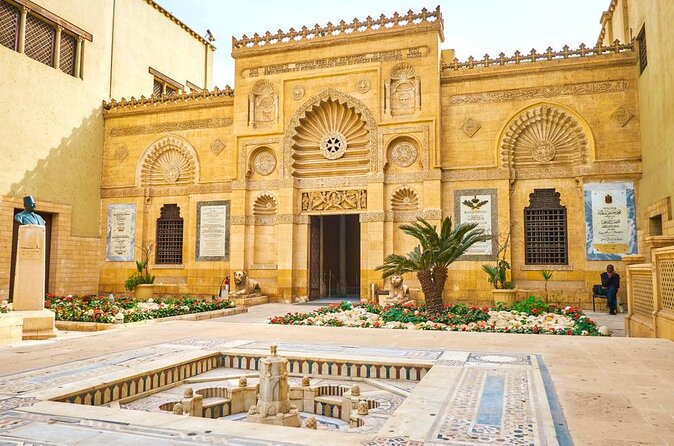
The Coptic Museum in Cairo
The Coptic Museum is located near the remains of Babylon’s Roman fort, is home to a collection of artifacts that document the history of Christianity in Egypt. It houses over 16,000 objects, including early Christian manuscripts, sculptures, and paintings. The museum is an important site for understanding the Coptic Church and its culture.
1-History of the Coptic Museum
The Coptic Museum was founded in 1908 by the Coptic community and the Egyptian government. It was established with the aim of preserving and displaying the vast collection of Coptic artifacts that had accumulated over the years. The museum was officially opened in 1914 and has since become an important destination for researchers and visitors interested in ancient Egyptian history and Christianity.
The Coptic Museum in Cairo houses an impressive collection of Coptic artifacts, including:
- Ancient Manuscripts: The museum holds an extensive collection of ancient Coptic manuscripts, including religious texts, historical documents, and literary works. These manuscripts offer valuable insights into the Coptic language and script, as well as Coptic culture and history.
- Coptic Art: The museum showcases a wide range of Coptic artwork, including religious iconography, sculptures, frescoes, and textiles. These pieces provide a unique window into the aesthetic traditions of the Coptic community and depict various Christian subjects, such as saints, martyrs, and biblical scenes.
- Coptic Coffins: One of the museum’s most fascinating exhibits is its collection of Coptic coffins. These intricately decorated sarcophagi serve as a final resting place for Coptic saints and dignitaries and showcase the skilled craftsmanship and religious beliefs of the Coptic community.
- Coptic Textiles: The museum houses an extensive collection of Coptic textiles, including liturgical vestments, ecclesiastical textiles, and everyday garments. These pieces provide evidence of the Coptic community’s textile traditions, as well as the influence of ancient Egyptian techniques.
2-Education and Outreach
The Coptic Museum is committed to promoting awareness about Coptic history and heritage through educational programs and outreach initiatives. The museum offers guided tours, workshops, and lectures for the general public, as well as specialized programs for students and researchers.
The Coptic Museum in Cairo is an essential institution for preserving and promoting Coptic culture and heritage. With its vast collection of Coptic artifacts, the museum offers visitors a glimpse into the rich and diverse history of Coptic Egypt. Through its educational programs and outreach initiatives, the Coptic Museum plays a crucial role in educating and engaging the public in the significance of Coptic heritage.

